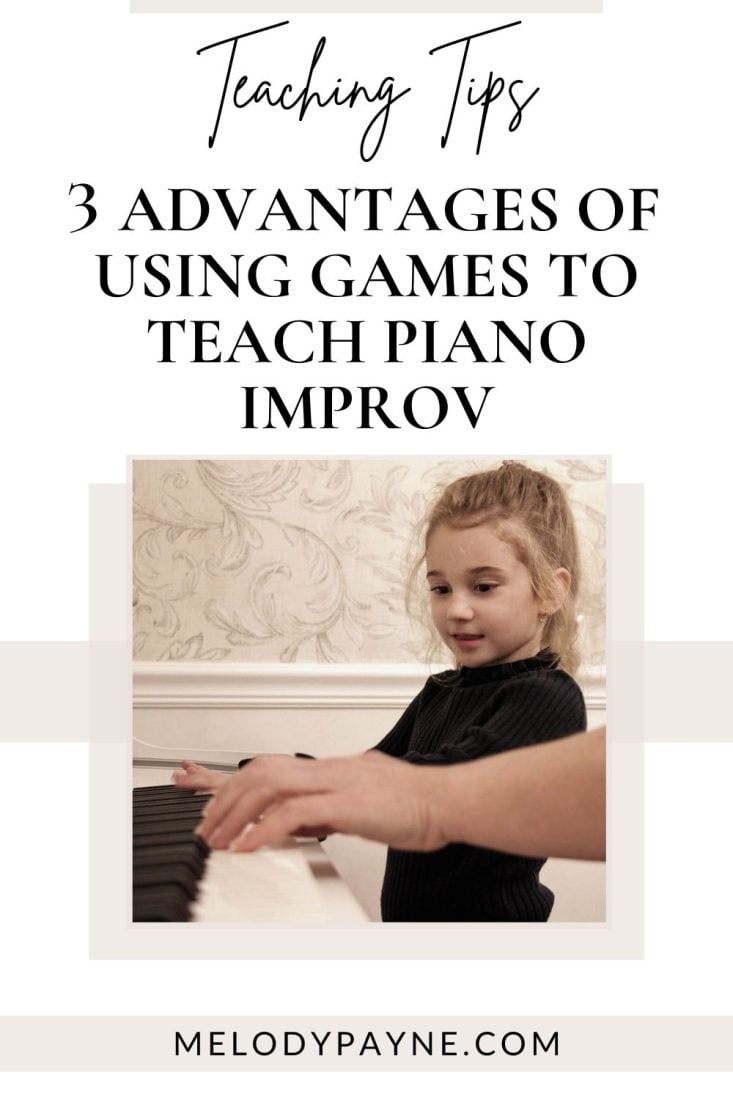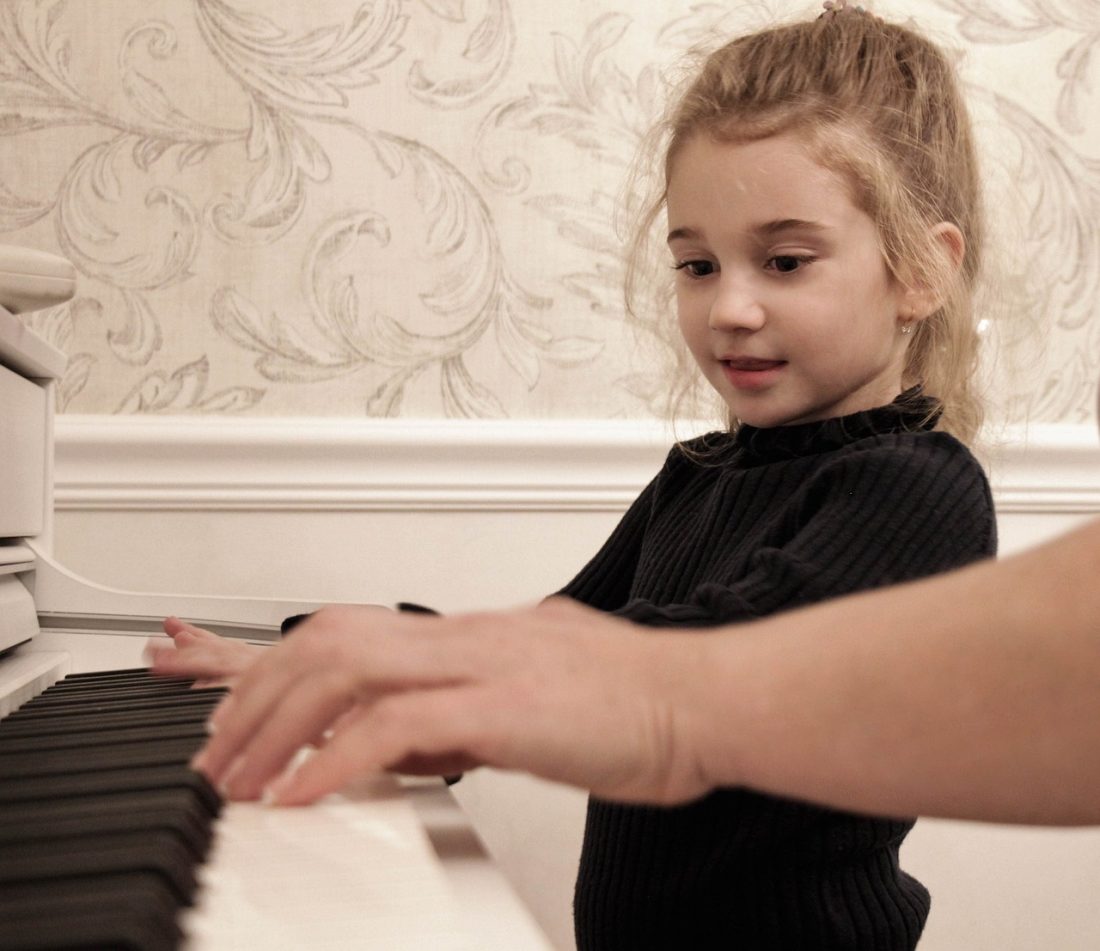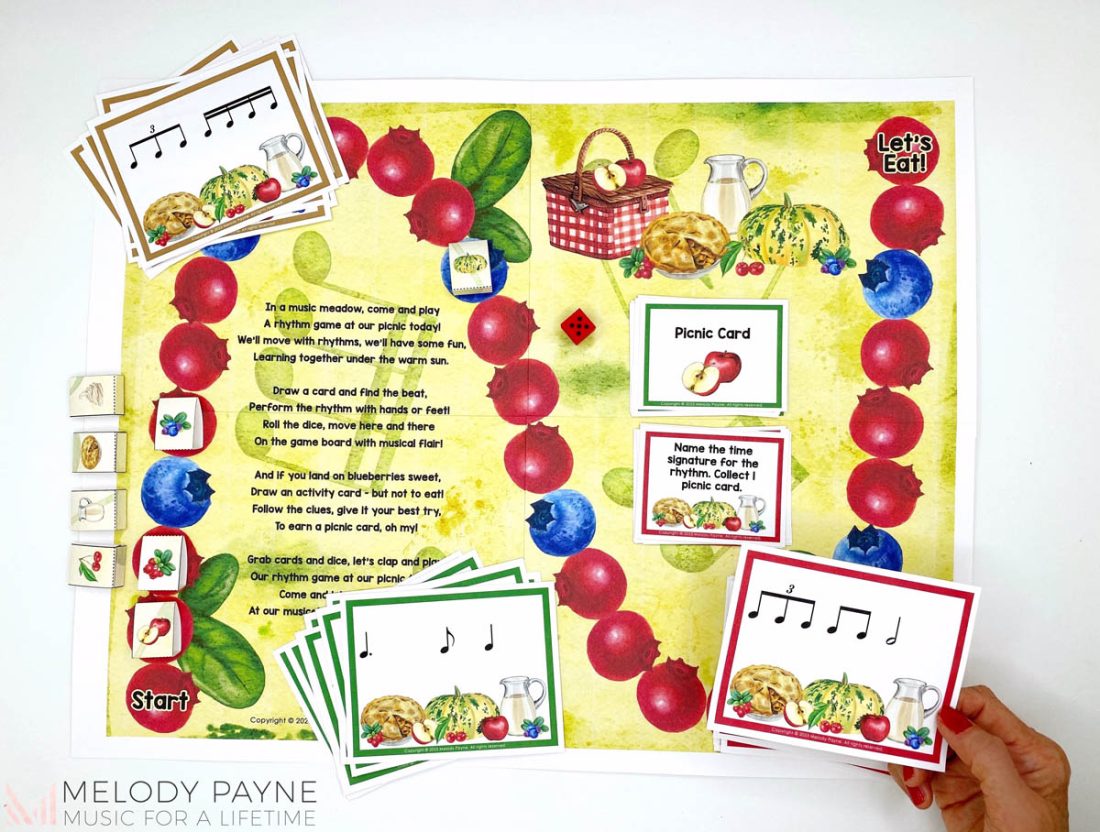3 Advantages of Using Games to Teach Piano Improv
This post may contain affiliate links. If you purchase something through an affiliate link, I will receive a small commission at no cost to you. For more information, read the disclosure statement here.

If you have never used games to teach piano improv, then this blog post is for you!
Music games are becoming more and more a standard for teaching music, and there are many versatile ways you can use them in piano lessons.
Games can be a powerful tool in teaching improvisation to piano students of all ages and levels, starting in the very first piano lesson.
Games help teach concrete-sequential learners to improvise music, provide a sense of direction, and add structure to improvisation.
Today, I will discuss these advantages in using games to teach piano improv as well as share a few tips to get you started.
This is part of our blog series on teaching improvisation to piano students.
You can catch our first blog post on 5 Good Reasons To Teach Piano Students How To Improvise here.
1. Using Games to Teach Piano Improv Helps Concrete-Sequential Learners
Some students are much more naturally inclined to experiment with their playing in an abstract way and come up with their own ideas, but others may feel intimidated by the idea of creating music on the spot.
I was definitely one of those intimidated concrete-sequential learners as a child!
If I was asked to sit down and “just play,” I would freeze and be unable to come up with anything at all.
Using games to teach piano improv can help ease concrete-sequential rule-following students into the improvisation process and make it a fun and engaging experience instead of a stressful one.
Games can help them tap into and develop their creativity in a safe, guided, playful, and non-judgmental environment.
When students are given flexible rules and constraints to work within, this can actually encourage them to think more creatively and come up with even more unique solutions.

2. Using Games to Teach Piano Improv Provides a Sense of Direction
In addition to providing structure, games also provide a sense of sequential direction, which can be especially helpful for students who feel overwhelmed by the open-ended nature of improvisation and prefer the comfortable boundaries that a loose set of rules can provide.
Another advantage of using games to teach piano improv is that games can make the learning process more enjoyable and memorable, and we all know that learning happens most easily when it’s fun!
This can help students associate improvisation with enjoyment and excitement, rather than stress, pressure, or fear of failure.
By using games to teach piano students how to improvise, you can help your students unlock a brand new musical skill in an engaging and non-scary way.
3. Using Games to Teach Piano Improv Provides Structure

I will be writing an entire blog post focusing on specific ways to teach piano improv with games, but I thought I would give you a few ideas to get you started.
The main idea is to use games as a springboard for ideas and help students see the process of improvisation.
- Use rhythm games to create rhythm patterns
- Students can start with just one pitch on the rhythm pattern then add more pitches as they gain confidence.
- You can combine rhythm games with simple triads; encourage the student to play around with the notes in the triad in that rhythm.
- Give the student four rhythm cards and challenge them to create the same melody with the four different rhythms.
- Games to use:
- Use sight-reading/note reading games
- The game cards can create the first measure of an improv.
- Encourage students to branch out and play it in different octaves on the piano.
- Teach sequences by showing the student how to use the same pattern starting on different notes.
- Play the notes from the game with three different rhythms.
- Games to use:
- Use dynamic games
- Create a story using the dynamics (they don’t have to play many notes to create a fun story!)
- Combine dynamics with registers of the piano (“piano” on the higher register and “forte” on the lower register)
- Games to use:
- Dynamics In Outer Space Boom™ Cards
- Use charades games
- Any non-music charades game is great to pick a card and have the student play in that style.
- Games to use
One thing to help students have confidence in improvisation is to discuss ideas before they play.
Let them bounce ideas off of you and come up with a short plan before they start their improvisation session.
Remind the student that improvisation is about exploring the different sounds of the piano and having fun–it does not need to be perfect!
There is no “right or wrong” in improvisation. There is just exploration.
What Games will you use to Teach Piano Improv?
I hope this blog post has gotten you excited about using games to teach piano improv.
In the next blog post in our improvisation series, I will discuss specific games to use in teaching students to improvise.
There are so many games you can use for this! I’d love to hear what you have in mind! Are there any rhythm games, sight-reading games, or other games that you use to teach piano improv?
More blog posts with creating teaching ideas…
Don't miss out!
Follow on Facebook and Instagram, join the best Facebook group for piano teachers, and subscribe to the newsletter to get helpful teaching tips, resources, and tutorials delivered straight to your inbox every week.
Amanda Tero
Amanda Tero
Welcome!

Hi! I’m Melody Payne, a pianist and piano teacher, educational resource author, a fun-loving wife to the most wonderful and talented hubby I could ask for, and a lifelong learner who loves to share. I want to make your life as a music teacher easier by writing and sharing helpful and relevant music teaching articles, and by creating educational resources with your very own students in mind. If you are a parent who wants to enroll your child in piano lessons, I’d love for us to get started building those skills that can give your child a lifetime of musical enjoyment!

